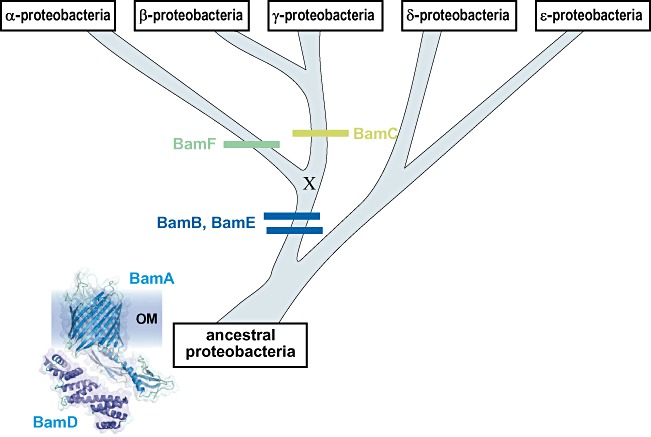Fig. 6.

The evolution of the BAM complex. The order of divergence for each of the five subclasses of proteobacteria is based on rRNA and RNA polymerase gene phylogenies (Klenk et al., 1999; Gupta, 2000). As BamA and BamD are ubiquitous in all five subclasses of proteobacteria, and found also in non-proteobacteria, it can be assumed they were both present in the ancestral proteobacterial species. It cannot be known whether other proteins assisted this ancestral, core BAM complex. The order of acquisition for BamB, BamC and BamE is according to their distribution in Table 1. A potential common ancestor for BamC and BamF has been indicated with an ‘X’ and is discussed in the text. However, given the available evidence, the most parsimonious model would be for an independent acquisition of BamF and BamC in the two lineages. In either case, the BamF- and BamC-protein families arise as indicated in green.
